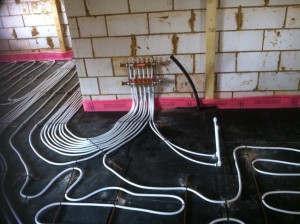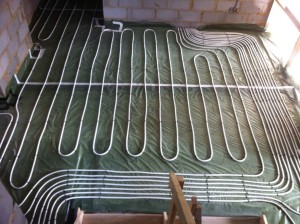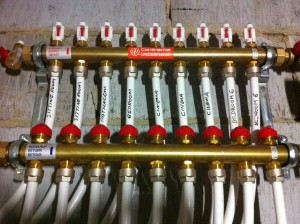Underfloor Heating
For new build houses, many are opting for underfloor heating on their ground floor at least. There’s nothing like it, unless of course you know where those hot pipes go in your house with traditional heating systems! We love it and so will your feet come winter time.
Underfloor heating is a fairly modern technique of heating a house via hot water piping systems which run under the floor. Zones are decided with mathematical software to calculate heating rates, based on room layout and proximity to draughty areas. Once planned, a manifold is put in place which will be the central operator of the heating system. The zones are then uncoiled from long heating pipes and clipped into place, flowing and returning from the manifold. Once these are all in place, the system is tested before screed is put down and the pipes cemented in the floor.
Once the house is complete, the heating works via a thermostat which can control what time the heating is turned on, along with what zones. The system can be custom tuned to suit how you like to run your household.
This method of heating works really well. As heat rises, it keeps the ambient temperature of the house comfortably warm, along with the sensation underfoot. This will ensure you are warm from head to toe.
Of course our ancestors were doing underfloor heating back in the neoglacial and neolithic periods, drafting smoke from fires underneath dwellings to heat them. We’ve come a long way since then, just take a look at the pictures below to get a feel for what it looks like!




Recent Comments